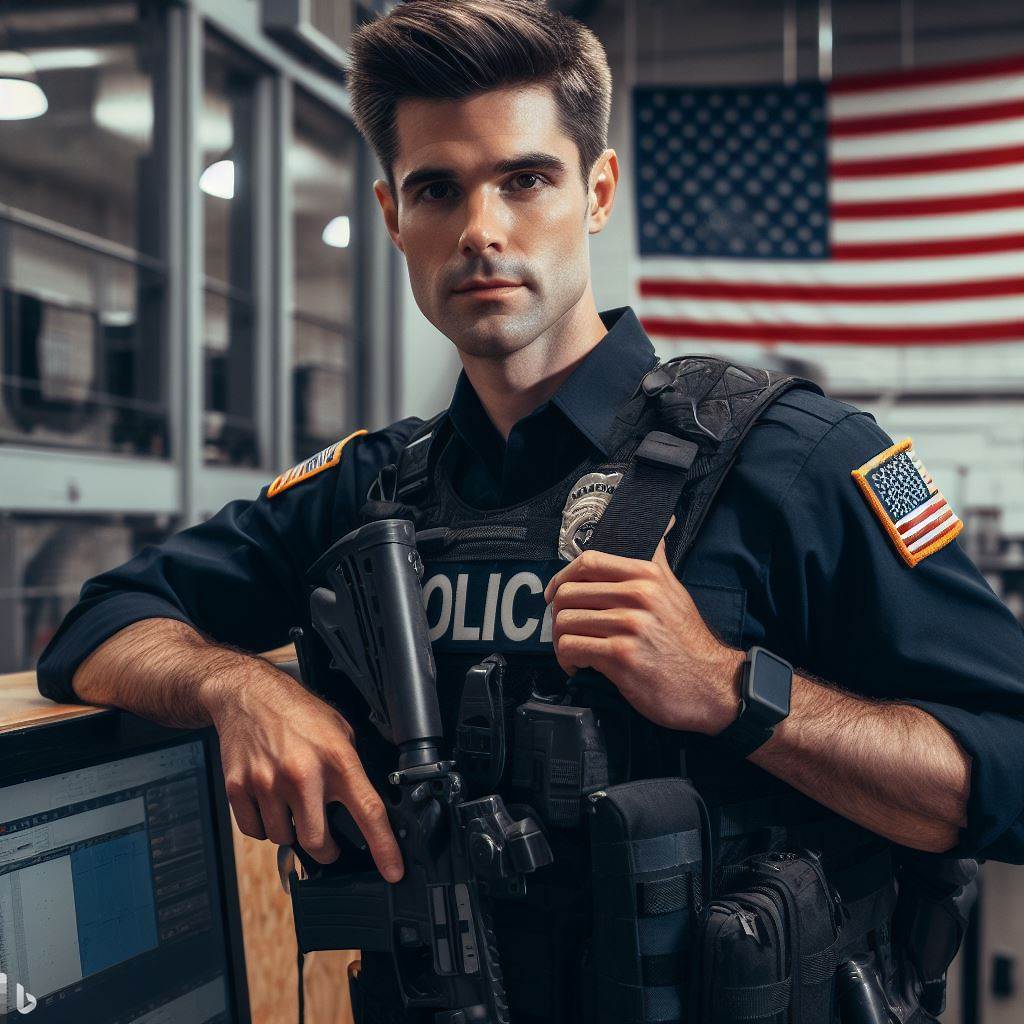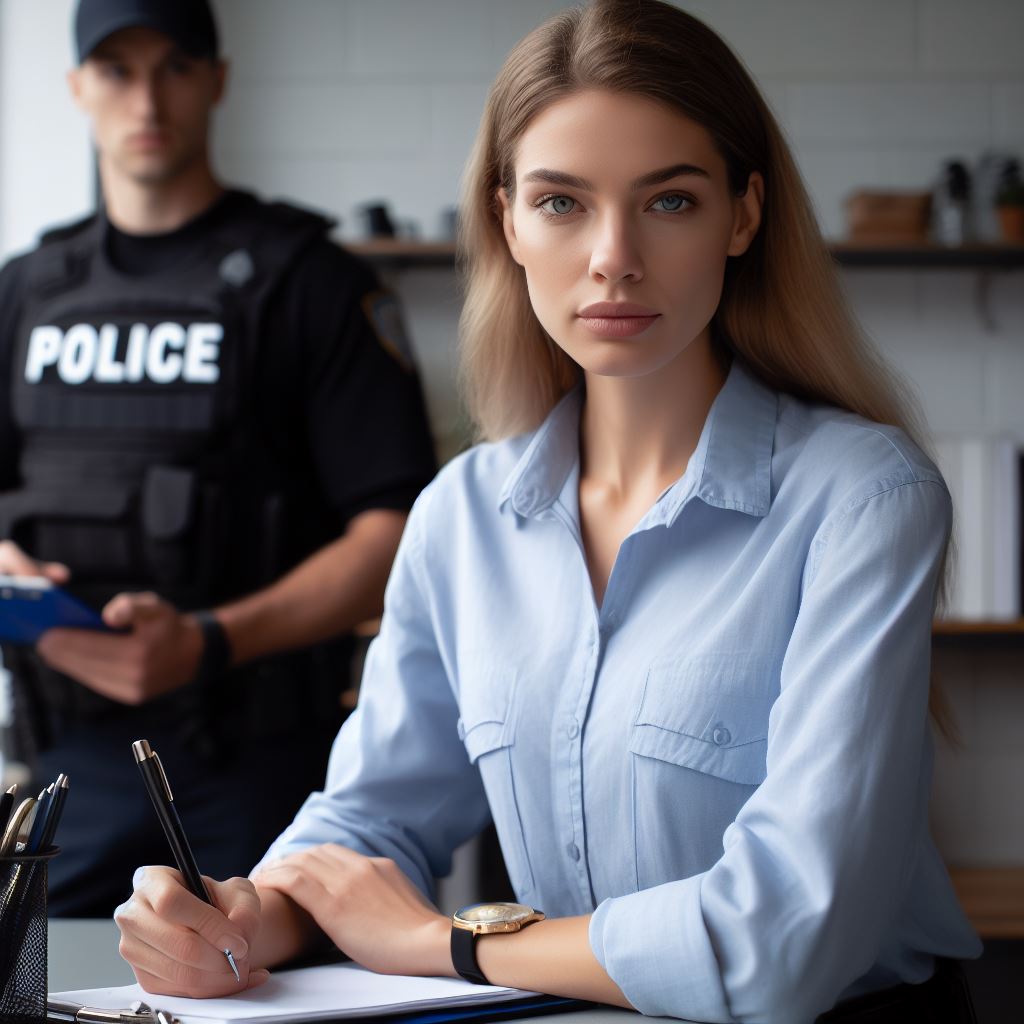Introduction
Importance of understanding the evolution of policing in America
Understanding the evolution of policing in America is of utmost importance for the society.
This blog section provides a brief overview of the topic, focusing on its significance.
Policing has undergone significant changes throughout history, shaping law enforcement practices in the country.
By studying its evolution, we can gain insights into current policing strategies and their effectiveness.
The topic explores the development of policing institutions, methods, and policies over time.
Analyzing this evolution helps us understand the challenges, successes, and controversies within the American policing system.
Additionally, it sheds light on societal and cultural factors that influenced the transformation of law enforcement.
Studying the history of policing in America also highlights the ongoing efforts for reform and improvement.
Moreover, it enables us to critically assess the impact of past practices on marginalized communities and civil liberties.
By recognizing the historical context, we can effectively address the issues and disparities that persist in modern policing.
Most importantly, comprehending the evolution of policing in America is essential for a well-informed and impactful discussion on law enforcement.
Early Beginnings: The Colonial Era
Origins of early policing in America
The early beginnings of policing in America were shaped by a blend of English law enforcement practices and unique colonial circumstances.
The English roots of law enforcement formed the foundation for the development of policing in colonial America.
One significant aspect of early policing in the colonies was the establishment of the Night Watch System.
In 1631, Boston created the first Night Watch, a group of volunteers who patrolled the streets at night to prevent crime.
This system aimed to maintain order and ensure the safety of the growing colonial communities.
Moreover, the Southern colonies adopted slave patrols, reflecting the oppressive nature of society at that time.
These patrols were primarily responsible for regulating enslaved populations. They enforced stricter control over slaves and sought to prevent revolts or escape attempts.
Roles and responsibilities of sheriffs and constables
Sheriffs played a crucial role in maintaining law and order within their respective counties.
Besides their responsibilities as tax collectors and enforcers of court orders, sheriffs also had the power to organize possess.
These possess consisted of citizens who assisted sheriffs in apprehending criminals and maintaining order.
Community-based form of law enforcement
The community-based form of law enforcement was prevalent during the colonial era. Informal networks of neighbors and citizens played a significant role in enforcing laws.
Communities relied on the concept of tithing, where groups of ten families were responsible for keeping the peace within their neighborhoods.
Additionally, town constables were appointed to serve as peacekeepers and mediators in resolving disputes within the community.
They acted as a bridge between the community and the formal law enforcement authorities, ensuring harmony and order.
Most importantly, the origins of early policing in America can be traced back to the colonial era.
English law enforcement practices, the Night Watch System, slave patrols, and the roles of sheriffs and constables all played a part in the development of law enforcement in the early days of the nation.
The community-based approach, with its reliance on informal networks and the tithing system, fostered a sense of shared responsibility for maintaining peace and order within colonial communities.
The Birth of Modern Policing: The 19th Century
In the 19th century, several significant developments led to the birth of modern policing in America.
Creation of urban police departments
As cities grew rapidly, the need for organized law enforcement became apparent.
Transform Your Career Today
Unlock a personalized career strategy that drives real results. Get tailored advice and a roadmap designed just for you.
Start NowInfluence of the London Metropolitan Police model
Many American cities looked to London’s police force as a model for their own.
Establishment of professionalized police forces
Policing began to shift from volunteer constables to paid, professional police officers.
Reform movements and their impact on policing
The social and political reform movements of the time played a significant role in shaping policing.
One of the most influential reform movements was the temperance movement.
Police were tasked with enforcing laws related to alcohol consumption and reducing drunk and disorderly behavior.
The abolitionist movement also had an impact on policing
Slave patrols were replaced with professional police forces responsible for enforcing new laws regarding freed slaves.
The women’s suffrage movement also influenced policing.
Women activists advocated for the inclusion of female police officers to handle cases involving women and children.
The Industrial Revolution played a crucial role in the development of modern policing
As cities industrialized and urban populations grew, crime rates escalated. The need for a professionalized police force to maintain law and order became evident.
During this time, the concept of preventive policing emerged. Instead of only responding to crimes after they occurred, police officers focused on preventing them.
The introduction of technology also revolutionized policing during the 19th century
New tools such as telegraphs and telephones enabled faster communication between police departments. Police could now relay information and coordinate their efforts more efficiently.
Additionally, the use of photography in criminal investigations became widespread. Photos of suspects and crime scenes were shared among police departments to aid in solving crimes.
In summary, the 19th century marked the birth of modern policing in America.
The creation of urban police departments, the influence of the London Metropolitan Police model, and the establishment of professionalized police forces were key developments.
Reform movements such as the temperance, abolitionist, and women’s suffrage movements also influenced policing.
These changes were driven by the rapid urbanization, industrialization, and societal shifts of the time.
The concepts of preventive policing and the use of technology also emerged during this period.
The Progressive Era and Professionalization
Key developments in the early 20th century
The Progressive Era marked a significant shift in policing approaches and practices in America.
The rapid urbanization and industrialization during this period presented unique challenges for law enforcement agencies.
Rising crime rates and public demand for safer communities led to the professionalization of policing.
Professionalization of police
Before this era, law enforcement was often characterized by corruption, political favoritism, and ineffective methods.
The Progressive movement sought to reform and modernized these outdated practices. The establishment of professional standards and qualifications for police officers was a crucial step towards achieving this goal.
Showcase Your Business Today
Reach thousands of readers actively exploring professional services. Publish your business profile and grow your audience now.
Publish NowPolice departments began to implement standardized hiring practices, including background checks, physical fitness tests, and psychological evaluations to ensure that only qualified individuals joined the force.
This focus on professionalism and competency helped restore public trust in law enforcement.
Creation of police academies
In order to train and educate new recruits, police academies were established.
These institutions provided comprehensive instruction in various areas of law enforcement, including patrol tactics, investigative techniques, and community relations.
The emphasis on higher education also increased the intellectual capacity of officers, as they were required to have a broader understanding of the law and society.
Adoption of modern equipment and technology
Furthermore, the adoption of modern equipment and technology greatly enhanced the effectiveness of policing.
The introduction of motorized patrol vehicles allowed officers to cover larger geographic areas and respond to emergencies more quickly.
Two-way radios revolutionized communication, enabling officers to coordinate their efforts and access immediate support.
Advancements in forensic tools and techniques, such as fingerprint analysis and crime scene investigation, enabled law enforcement to gather more accurate evidence and solve crimes more efficiently.
These technological advancements not only improved the professionalism of the police force but also increased their effectiveness in maintaining law and order.
In general, the Progressive Era witnessed significant developments in the professionalization of policing in America.
To significantly reduce risks and enhance overall safety levels, individuals must follow essential safety protocols implement measures recommended by U.S. fire veterans.
These practices are crucial for risk mitigation, fire safety, and emergency preparedness.
These changes laid the foundation for the modern police force we have today.
Read: Fire Department Hierarchies: From Rookie to Chief
Challenges and Controversies: Policing in the Civil Rights Movement
During the Civil Rights Movement, the role of the police in America faced several challenges and controversies.
The movement, which fought for racial equality and an end to segregation, posed significant challenges to law enforcement agencies across the country.
Police responses to civil rights protests and demonstration
- The Police responses to civil rights protests and demonstrations were often marked by violence and confrontation.
- African Americans and civil rights activists faced beatings, arrests, and unjust treatment at the hands of the police.
- Cases of police brutality and misconduct were widespread during this period.
- The police were often seen as defenders of the status quo, enforcing discriminatory laws and maintaining racial segregation.
- The civil rights movement brought attention to the systemic racism within police departments.
- It exposed the biases and discriminatory practices that were deeply rooted in law enforcement agencies.
- The movement demanded that police be held accountable for their actions and that their conduct be in line with constitutional rights.
Impact of the civil rights movement on policing practices
As the civil rights movement gained momentum, it had a profound impact on policing practices throughout the United States.
- The movement fueled calls for police reform and the establishment of civilian oversight committees to address police misconduct.
- The use of excessive force by the police was brought into the spotlight, leading to demands for stricter regulations and accountability.
- The movement highlighted the need for diversity within police forces to better reflect the communities they serve.
- Police departments recognized the importance of community relations and shifted towards community policing strategies.
- The movement brought attention to the over-policing of minority communities and the need for fair and equal treatment under the law.
- It led to the development of new training programs for law enforcement officers to enhance cultural sensitivity and de-escalation techniques.
- The civil rights movement ultimately prompted significant changes in policing practices and policies, paving the way for more equitable law enforcement.
Cases of police brutality and misconduct
However, the challenges and controversies faced by the police during the civil rights movement also revealed deep-seated divisions within society.
- Many individuals and communities supported the police, viewing their actions as necessary to maintain order and protect public safety.
- Critics argued that the police were merely implementing laws passed by elected officials and should not be held solely responsible for discriminatory practices.
- The police also faced resistance from within their ranks, with some officers opposing desegregation and equal rights for African Americans.
- Public opinion on the role of the police during the civil rights movement remained divided, further fueling controversies and debates surrounding policing practices.
In essence, the civil rights movement posed significant challenges and controversies for the police in America.
It exposed the deep-rooted racism and inequalities within law enforcement agencies and prompted calls for reform.
The movement played a pivotal role in shaping modern policing practices and policies, leading to increased accountability and a greater focus on community relations.
However, it also highlighted the divisions within society regarding the role and responsibilities of the police.
Read: Key Skills Every U.S. Firefighter Must Possess

Modern Era: Community Policing and Shifts in
Public cooperation and community partnerships
In the late 20th century, community policing emerged as a response to societal changes.
Law enforcement agencies began to shift their focus towards public cooperation and community partnerships.
Emergence of community policing in the late 20th century
Community policing aims to build trust and collaboration between the police and the community.
One of the main criticisms of community policing is its reliance on voluntary participation from community members.
Some argue that it places an unfair burden on communities to address crime instead of the police.
Criticisms and effectiveness of community policing
Despite these criticisms, community policing has been shown to be effective in certain situations.
Research has found that when communities are actively involved in crime prevention, it can lead to safer neighborhoods.
This approach has also been successful in improving police legitimacy and reducing fear of crime.
However, community policing is not a one-size-fits-all solution and may not work in every community.
There are several factors that can affect the effectiveness of community policing, such as community demographics and socioeconomic status.
In recent years, there has been a shift towards problem-oriented policing and intelligence-led policing.
Problem-oriented policing focuses on identifying and addressing the underlying causes of crime.
It aims to prevent crime by targeting specific problems rather than simply responding to incidents.
Shift towards problem-oriented and intelligence-led policing
Intelligence-led policing, on the other hand, emphasizes the use of data and intelligence to guide policing strategies.
Law enforcement agencies collect and analyze information to proactively identify and respond to crime patterns.
This approach allows police to allocate their resources more effectively and prioritize high-risk areas.
Both problem-oriented policing and intelligence-led policing are seen as more proactive and strategic than traditional reactive policing.
They require officers to think critically and use evidence-based practices to address crime.
While community policing is still an important aspect of modern policing, it is often combined with these newer strategies.
Law enforcement agencies strive to find a balance between building community relationships and addressing crime effectively.
Overall, the modern era of policing has seen a shift towards community-oriented approaches and proactive strategies.
This has been driven by a recognition that effective policing requires collaboration and cooperation between the police and the community.
As crime continues to evolve, law enforcement agencies will likely continue to adapt their strategies to effectively address the changing landscape of crime.
Read: Rituals and Traditions in U.S. Firefighting Culture
Recent Developments: Policing in the 21st Century
In the 21st century, policing has witnessed significant changes and developments due to technological advancements.
These advancements have revolutionized the way law enforcement agencies operate and interact with the community.
Technological advancements in policing
- Adoption of advanced communication systems and digital databases to streamline police operations.
- Implementation of predictive policing algorithms to identify potential crime hotspots and allocate resources efficiently.
- Integration of social media and digital platforms to improve community engagement and gather information.
Use of body cameras and surveillance systems
The recent developments in policing in the 21st century have both positive and negative impacts. The use of technology has undoubtedly improved efficiency and effectiveness in law enforcement.
Body cameras and surveillance systems have created an environment of transparency and accountability, enhancing trust between the police and the public.
However, there are concerns about the potential misuse of technology and violations of privacy.
The extensive collection and analysis of data raise questions about surveillance practices and the protection of civil liberties.
Striking a balance between public safety and individual rights remains a challenging task for law enforcement agencies.
Increased emphasis on diversity and cultural competency in policing
- Law enforcement agencies have recognized the importance of reflecting the communities they serve.
- Diversity hiring initiatives aim to recruit officers from different backgrounds to bridge the gap between the police and the community.
- Cultural competency training equips officers with the necessary skills to effectively interact with diverse populations and understand cultural nuances.
Additionally, efforts to diversify police departments and promote cultural competency are crucial for building trust and addressing systemic issues within law enforcement.
Recognizing and understanding the diverse needs of communities leads to better policing outcomes and more equitable treatment of all individuals.
Continued debates on police reform
- Discussions on police reform have intensified, focused on issues such as excessive use of force and racial profiling.
- Efforts to enhance trust and rebuild relationships between law enforcement and the community are being made.
- Proposals for new legislation and policies are being debated to improve accountability and transparency within police departments.
The continued debates on police reform call for a collective effort from communities, law enforcement agencies, and policymakers.
Meaningful reforms should be implemented to address systemic issues and ensure accountability in policing practices.
Showcase Your Business Today
Reach thousands of readers actively exploring professional services. Publish your business profile and grow your audience now.
Publish NowAs we move further into the 21st century, it is essential to embrace technological advancements responsibly and uphold the values of fairness, equity, and justice in policing.
The future of policing lies in the hands of those who strive for positive change and work towards a safer and more inclusive society.
Read: Volunteer Firefighters: The Unsung Heroes in the U.S.
Conclusion
Evolution of policing in America
The history of policing in America can be traced back to its early roots in the form of night watches and constables.
Over time, the development of professional police forces emerged with the establishment of the New York City Police Department in 1845.
As urbanization and industrialization progressed, policing continued to evolve.
The Progressive Era saw significant reforms in policing, including the introduction of community-oriented approaches and adoption of new technologies.
The rise of organized crime during the Prohibition era further shaped policing strategies, leading to the creation of specialized units like the Federal Bureau of Investigation.
In the 1960s and 1970s, civil rights movements fostered discussions on police brutality and racial biases within law enforcement.
This period highlighted the need for accountability and the importance of community relationships in policing.
Currently, modern policing faces increasing scrutiny and demands for reform. Issues such as police militarization, use of excessive force, and racial profiling persist.
Reflecting on the historical context of policing in America helps inform discussions on these pressing concerns.
By examining how policing has evolved, we gain insights into the challenges and opportunities for improvement.
Recognizing the positive advancements made in community-centered policing models allows us to push for further reforms that prioritize accountability, transparency, and equal treatment for all citizens.
Importance of reflecting on historical context for informed discussions about current policing issues:
Understanding the historical development of policing in America reveals the complexities surrounding its current state.
By acknowledging past policies and practices, we can critically assess their impact on marginalized communities and work towards equitable solutions.
Historical context provides a foundation for informed discussions on present-day challenges, allowing us to address systemic issues and pursue effective reform.
It allows us to question the status quo, challenge biases, and advocate for fair and just policing practices.
Ultimately, reflecting on the evolution of policing in America highlights the need for continued dialogue and informed decision-making.
By learning from history, we can forge a path towards a more accountable, transparent, and community-centered approach to law enforcement.
[E-Books for Sale]
The Big Book of 500 High-Paying Jobs in America: Unlock Your Earning Potential
$19.99 • 500 High-Paying Jobs • 330 pages
Explore 500 high-paying jobs in America and learn how to boost your career, earn more, and achieve success!
See All 500 High-Paying Jobs of this E-Book
1001 Professions Without a Degree: High-Paying American Jobs You Can Start Now
$19.99 • 1001 Professions Without a Degree • 174 pages
Discover 1001 high-paying jobs without a degree! Unlock career tips, skills, and success strategies for just $19.99!




